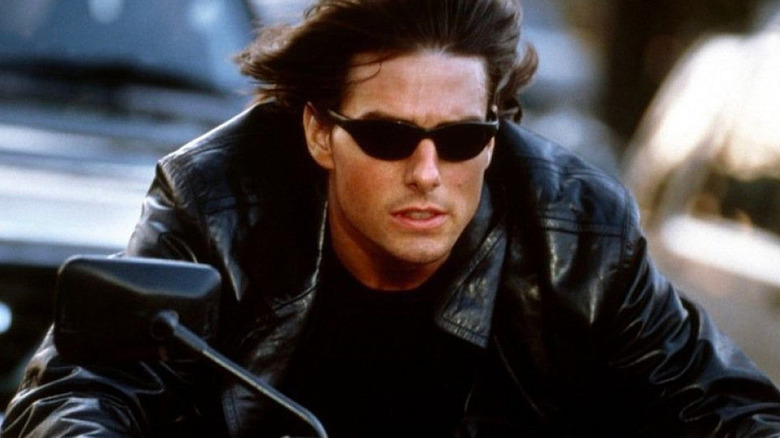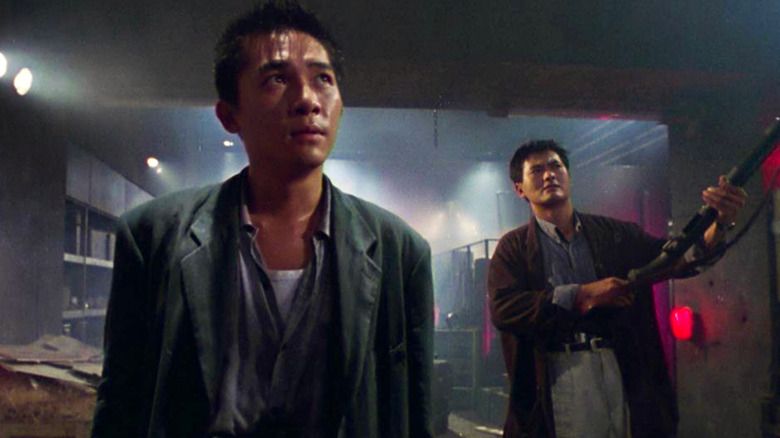Why John Woo Doesn't Use The Same Slow Motion Technique For Every Actor
Action auteur John Woo is recognized as much for his signature style as he is for the films that put him on the map. The mere mention of his name conjures images of stylized gun fights (affectionately titled "gun-fu"), heavily-tinted sunglasses and leather jackets, and of course, doves — but none of that would look half as cool without Woo's best-known trick: slow motion.
Love it or hate it, slo-mo has become a staple of action cinema, even if it reached its peak (or its relevance, depending on who you ask) in the '90s. Woo was one of the masters of the technique, and creating his signature style was way more complicated than it looks. Woo gave Premiere a sneak peek into his process back when he was promoting "Mission: Impossible II," and he revealed that, in addition to storyboarding, he plans each scene based on the multiple angles he intends to film:
"When I'm shooting I know exactly what I need for every shot, every setup, and also about the speed of the camera — which angles use double speed, which ones use slow motion."
For action scenes that are particularly dense — like one of Woo's many balletic explosions — the director will use no less than 10 cameras to get all the coverage he needs. And then there's the matter of frame rate. Certain sequences can be captured at higher rates than others ... and apparently, so can his lead actors.
Who looks best in slo-mo?
For anyone not entirely sure how slow motion works, it's important to know that one second of film typically runs at 24 frames per second — that's essentially 24 images captured in that amount of time. When a camera captures more images per second and they're played back at a slower rate, slo-mo is born. The higher the frame rate, the slower the playback. (It's more complicated than that, but we're keeping it simple.) And Woo has been doing this long enough to know where slow motion is needed, and when — if ever — it isn't. And he's also experienced enough to know that some actors look really good in slow motion, while others do not. And it varies by degrees.
"Some actors are good for 120 frames in slow motion," Woo told Premiere. "Some are good at 96 frames, some for 60 frames." And there are other actors who shouldn't be slowed down at all:
"Some you want to see them, like Jackie Chan. Pow! Pow! Pow! Pow! That's his real character. He's just like a tiger. There's no reason to use slow motion."
Of all the stars Woo has worked with, Tom Cruise and Chow Yun-fat run the slo-mo gamut. Both can handle about 120 frames per second, though Woo admits that Chow is "good at any speed." John Travolta and Nicholas Cage, who worked with Woo in "Face/Off," can handle up to 96 frames and 60 frames respectively — and no shade to Cage, but 60 fps makes a weird amount of sense when you think about it. Woo's understanding of slow-motion is like a fascinating personality test, one we should use to gauge all our action stars with from here on out.

